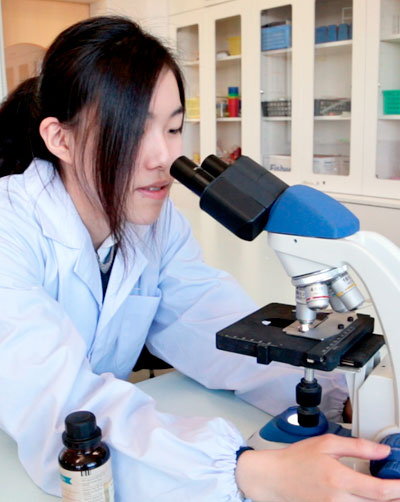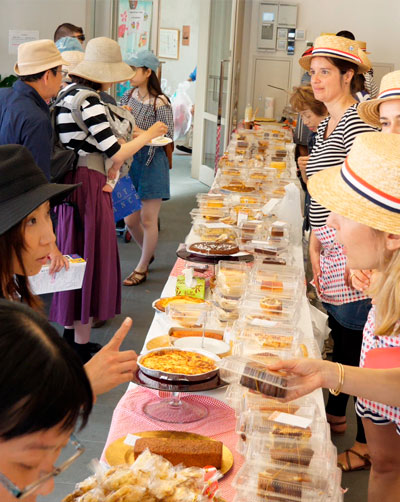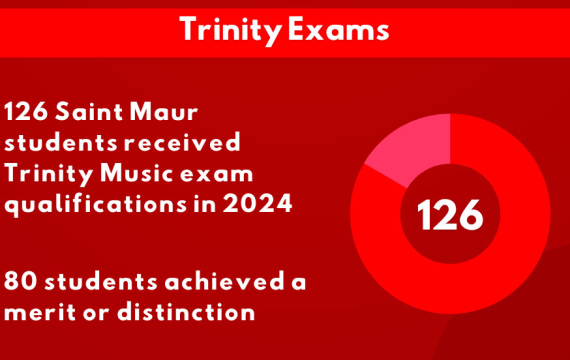
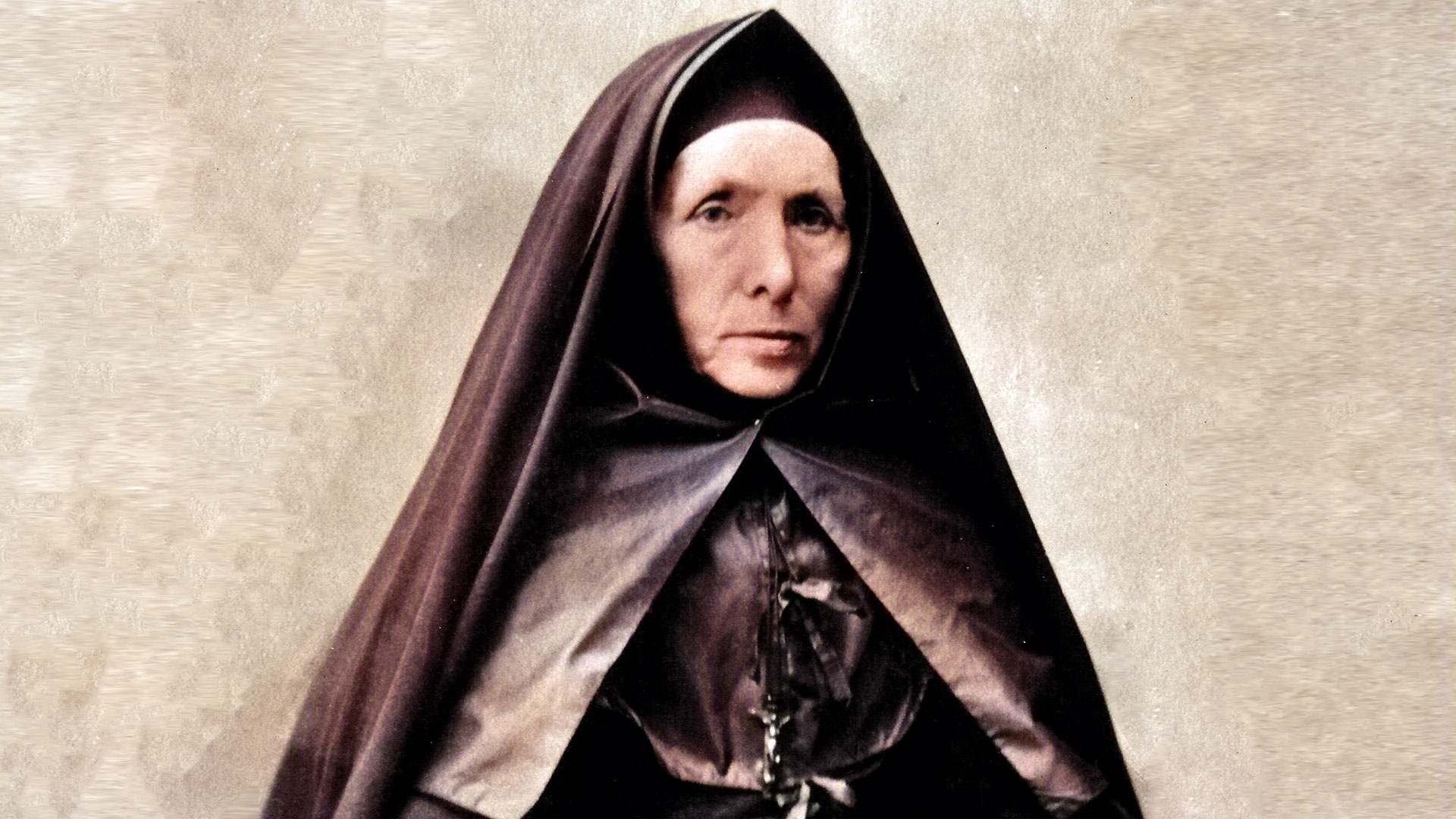
- Catherine O. Endo
- Events
The 210th Anniversary of the Birth of Mère Mathilde Raclot, the founder of Saint Maur International School
This year marks the 210th anniversary of the birth of Mère Mathilde Raclot, the founder of our school.
She was born in 1814 in a small town in northeastern France and became a teacher after joining the Congregation of the Infant Jesus. In 1852 she left France for Malaysia and Singapore, where she established schools over the next twenty years. Today there are Saint Maur schools throughout Malaysia, and eleven in Singapore alone!
Christianity had been outlawed in Japan for over 200 years, but when Mathilde learned that the laws would be changed, she immediately took on a new challenge in 1872. Even though she was already 58 years old, she immediately sailed from Singapore to Japan with four other French and Irish sisters, and they founded Saint Maur in Yokohama. Eventually she expanded them to the five Futaba schools across Japan.
Mathilde lived to be almost 100 years old, dying in 1911. We owe the founding of our school to her energy, faith, and spirit.
In this article of Mother Mathilde Raclot, founder of Saint Maur International School, Yokohama, and our Infant Jesus sister school, Futaba Gakuen, I wish to present to you a real-life profile of Mother Mathilde, her life and service from her birth in 1814 to her death in 1911.
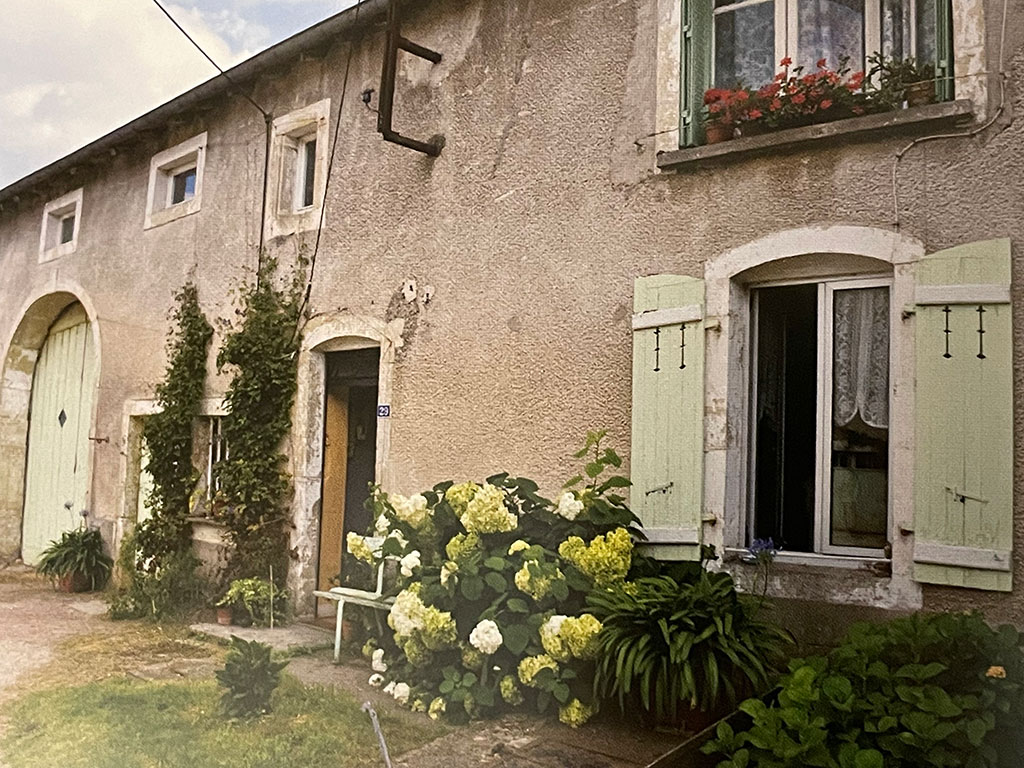
Mathilde Raclot was born in this house in 1814 (Photo credit Watanabe Shun)
Marie-Justine Raclot was born in Suriauville (Vosges) on February 9, 1814 as the daughter of Charlotte Lamirelle and François Raclot, who already had four sons from his previous marriage. Charlotte, an intelligent, energetic woman and a committed Christian, was disappointed when she gave birth to a girl as she had hoped for a son. Perhaps this disappointment, coupled with her strong character, explains the lack of tenderness that existed between mother and daughter. On the other hand, Justine greatly admired her father whom she perceived as a man of integrity, calm, patient, and gentle, with good common sense. Justine’s personality, with its combination of strength and gentleness, reflected some of the characteristic traits of both her parents. François Raclot was the village mayor who had always opened his house to those who were in need. During the harsh winters, he would provide food, shelter, and warmth in his own home for the destitute people of the village.
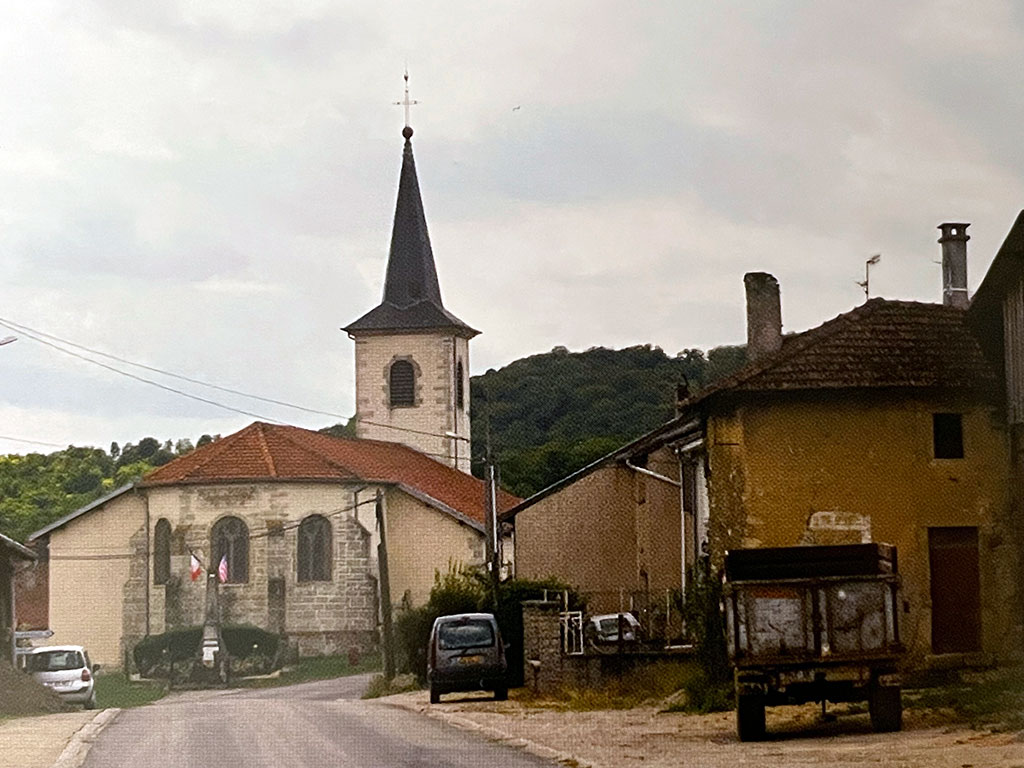
The town of Suriauville (Photo credit Watanabe Shun)
When Justine was 12, her parents decided to send her as a boarder to the Infant Jesus Sisters’ school in Langres. She received her First Holy Communion there on May 16, 1827. As a student Justine would often open the page of her geography book showing the map of Japan and sit daydreaming in front of it. She imagined herself going one day to this mysterious country, though it had been inaccessible to foreigners for several centuries. Well over forty years later, she indeed would see her dream come true.
In 1832, at the age of 18, Justine obtained permission from her parents to join the Infant Jesus Sisters’ community in Langres as a postulant and entered there on October 15, 1832. She was later sent to Paris for her novitiate, had received her habit there Paris on Feb. 2, 1834 and was given the name Sister Mathilde. Mathilde is known to have been a cheerful young woman who brightened the community with her sense of humour.
Mathilde was 21 years old when she was sent to Bagnols. There the sisters’ house was badly in need of repair, with the same room being used as a chapel, refectory, and sitting room with barely enough room for six people. Mathilde quickly learned how to find God in all things and in all places. She had learned to commune with God just as easily before a blank attic wall as when gazing at the stars.
Around that time the school in Beziers went through some crisis with the sixth form students being very rebellious. No classroom teacher was able to control them. Mathilde was assigned to this school. She was confronted by big girls who decided to try her out. One by one the girls asked to leave the classroom. She granted the permission and secretly observed the direction in which they headed. It was towards a cellar, in total darkness. When the last girl had gone out, she quietly slipped into the cellar in the dark. The students were totally unaware of her presence. They were having a good laugh and congratulating themselves on having fooled the new teacher. She waited a little while and then lit her lantern. Consternation followed! Sister Mathilde just made a brief comment. Firmly and with authority she told the class that the story would go no further provided that from now on there would be no more nonsense. She had won their trust and discipline was restored!
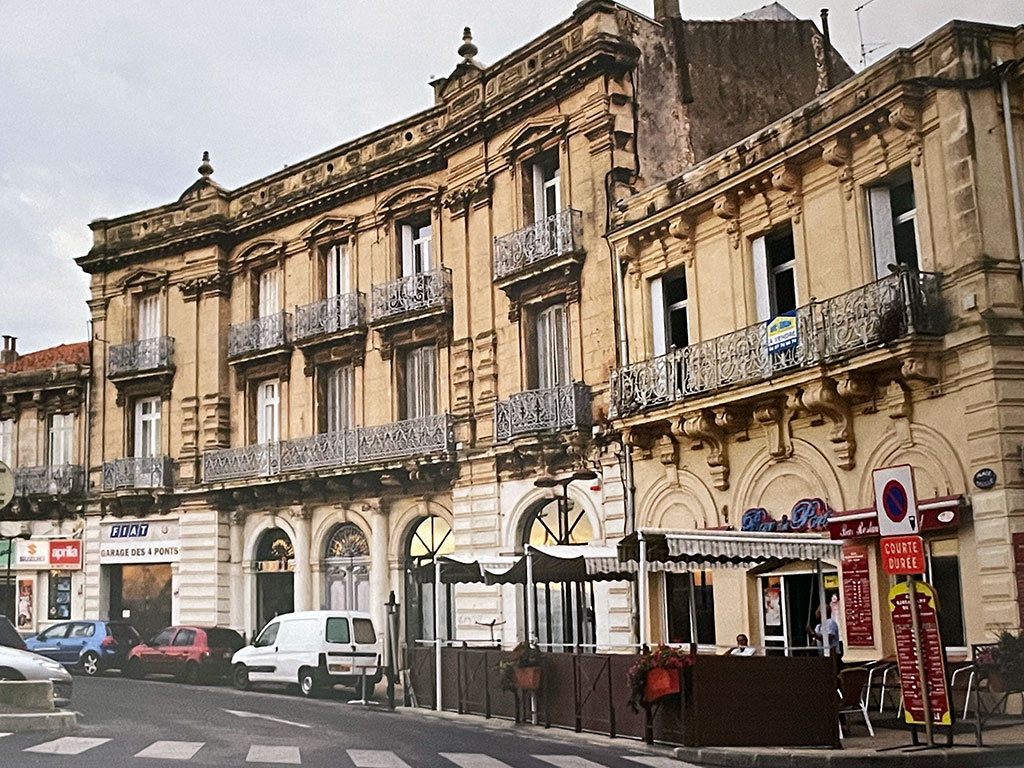
The Infant Jesus Convent and School in Sete (Photo credit Watanabe Shun)
Following this success as a teacher, her competence was requested for another sixth form class in Cette (Sète). She arrived in 1842 and stayed there for 10 years until her departure for Asia. She proved to be a very skilled and versatile educator who squeezed many things into her day: reading, learning, acquiring all kinds of skills that would be useful one day. Later on in life, she showed that she was equally capable of successfully drawing up plans for a building, of producing a delicate piece of embroidery, or of crafting lovely artificial flowers for the chapel. When assigned to Japan, she taught the Japanese builders of the first convent how to go about making a good concrete mix.
In 1851, Abbé Jean Marie Beurel, Missions Étrangères de Paris (MEP) arrived in France, sent by Mgr Jean Baptiste Boucho, bishop of Singapore, who wanted missionaries to open a school there. After having contacted many congregations, he finally found Mother St. François de Faudoas, Superior General, someone ready to listen to his request. A contract was signed between the MEP, and the Institute: a group of five sisters would be sent. Sister Mathilde wanted so much to be part of this first mission, expressed her desire, and started to learn English fervently. However, she was not called upon. No doubt the reason was that she was such a skilled educator and was needed for the schools in France, which at that time were expanding rapidly.
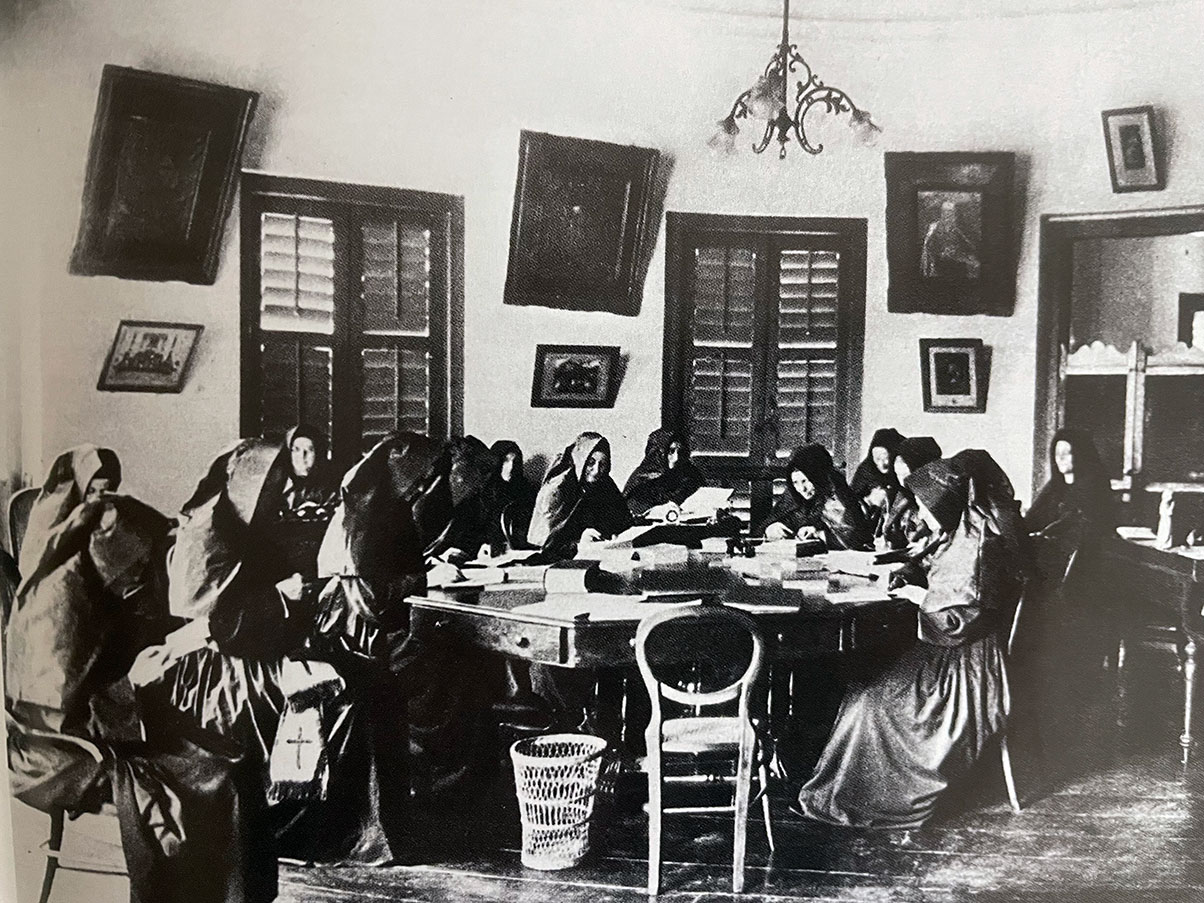
4 Infant Jesus Sisters in the Singapore Convent
For a number of reasons, to include the climate and serious health issues, the first set of sisters could not carry out their mission. Plans for a second mission to be executed was urgent. Mathilde was called urgently to Paris by Mother François de Sales, who told her to “leave everything and come”.
In 1854 Mathilde and three other sisters, left the community in Penang for the community in Singapore. Although the Christian community gave them a wonderful reception, difficulties surfaced, to include the MEP priests’ disappointment that the team that was sent were not English sisters, but French; the sisters having to study both English and Malay, and having to contend with the presence of numerous English-speaking Protestant missionaries. In those days, ecumenism, as we know it, was still a far way off.
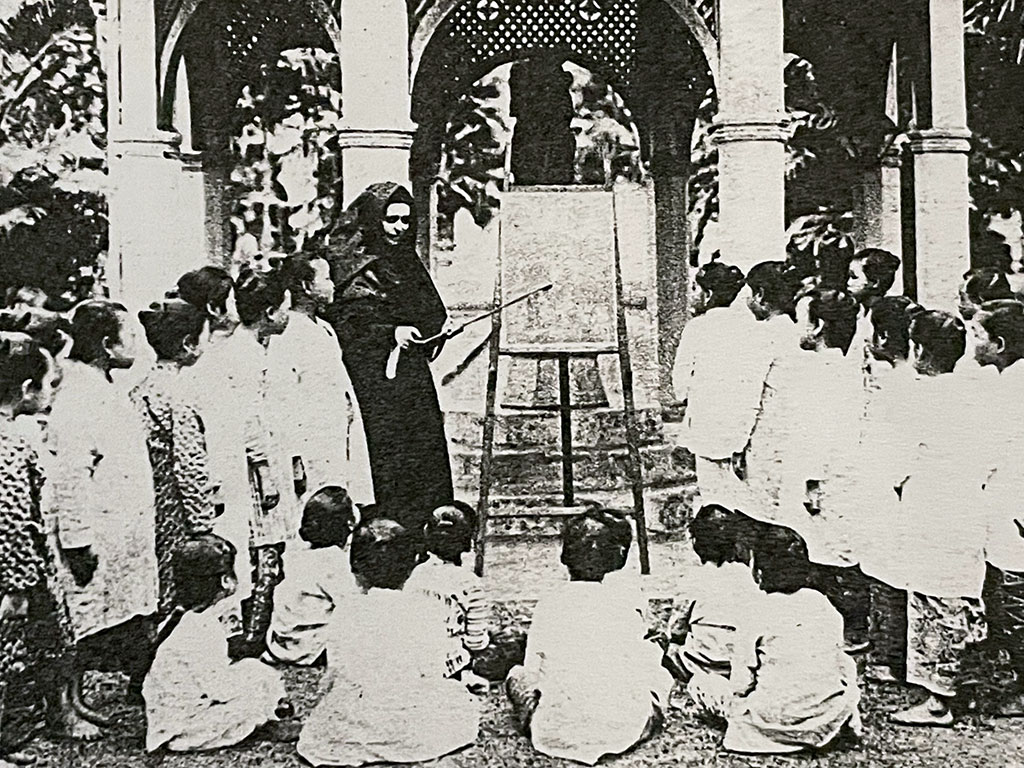
Outdoor class at the Town Convent School in Penang
The sisters opened two classrooms to receive their first students: one for the daughters of the English families, the other for children who were orphans. Coping with the orphans who had been badly treated in the past was very challenging, and required patience and love. Mathilde wrote later: “For now, we become their servants. Later on, they will change, they will learn to pray and become attached to the house and their work.” In time the older orphans recognized how hard their teachers worked to provide for the poor and how they welcomed all who were brought to them. The community was unanimous in wanting everyone to work together as a team. After night prayer, the community room was transformed into a workshop, from 9:00 p.m. to midnight, with everybody producing embroidered pieces for sale to raise funds for all the projects they had in mind. Mathilde wrote: “The thought of saving souls made us easily forget our tiredness and our lack of sleep. When the heart expands, its strength id doubled.”
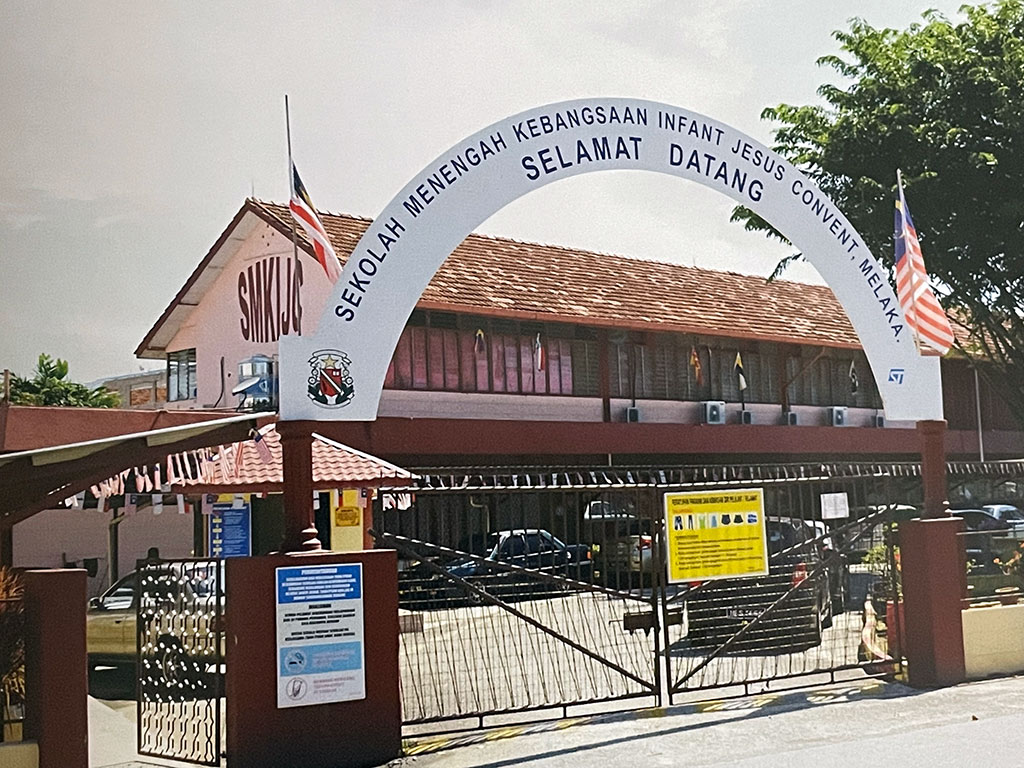
The Infant Jesus School in Malacca (Photo credit Watanabe Shun)
In 1859, having received insistent requests from the priests of Malacca, Mathilde, with two companions, set sail for this destination. Mathilde was met with more challenges during this time, with some troublemakers who gave inaccurate accounts of what the zealous missionary, Mathilde, was undertaking. An untruth that Mathilde started the foundation in Malacca without the permission of the Bishop, had reached the ears of the Superior General who reprimanded Mathilde for the wrong-doing. Shortly afterwards, Mathilde contracted a serious illness, which continued to worsen, such that people believed that she was on her deathbed; However, she revived miraculously and the illness disappeared without a trace. The mission in Malacca had to be closed down through lack of sisters and of money, but Mathilde re-opened it in 1875.
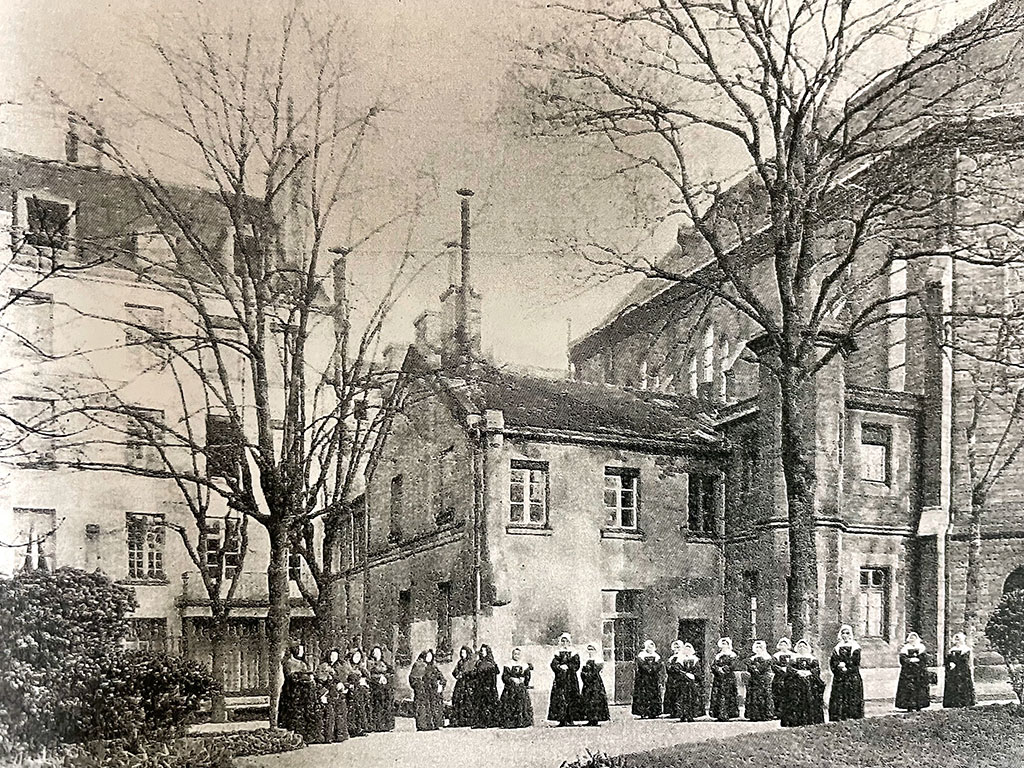
The Infant Jesus Mother-House on the Rue Saint-Maur
In May, 1867, the visit to the Superior General in Paris allowed Mathilde to inform her firsthand about all that had been accomplished in Malaysia and the admirable life the sisters were living there. She made no attempt to justify herself or defend herself against false accusations that had been made against her. But the trust between them had been recovered.
Back in Singapore, Mathilde never refused to do any good work that was within her power. All who came knocking at the door of her heart found their way in: strangers, passengers on board ship, sick people, the uneducated, poor and abandoned people, the dying, no matter what religion, all were well received. She rescued little Chinese girls sold into slavery by their parents. Anyone and everyone to whom she could be of some help was welcomed.
In 1872 Monsignor Petitjean had called the Infant Jesus sisters to Japan because the Congregation he had counted on could not respond to his request. Mathilde consulted the Superior General by telegram, and on Pentecost Day, May 20, received a solemn “Yes” to the request. The four sisters who had originally been assigned to Siam were sent to Japan, accompanied by Mathilde who stayed on to help during the first few months. They set sail on June 10, 1872 and arrived in Yokohama on June 28. Mathilde, whose childhood dream was to visit Japan, wrote: “I could hardly believe my eyes. At last I was seeing this country, Japan, which even in my childhood had so often awakened longings in my heart. I had really crossed the seas! The island that we were landing on was the very one on which, three centuries earlier, Francis Xavier had planted the Cross.”
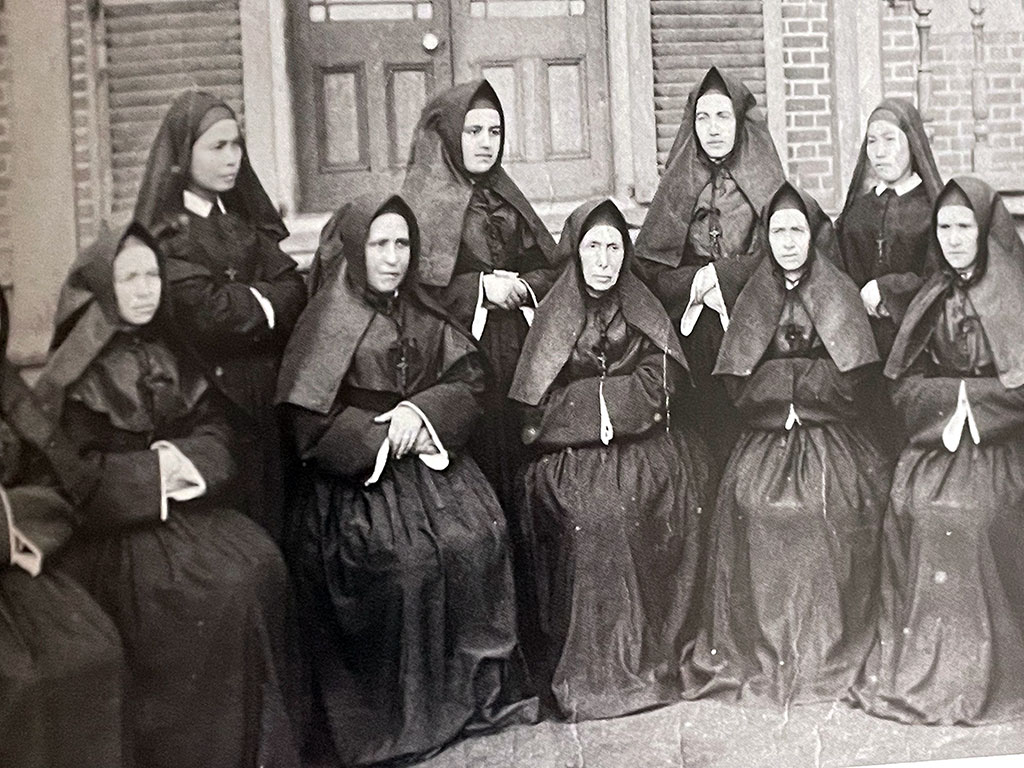
The Saint Maur Sisters with Mathilde in the center
Starting the mission in Japan was very bumpy. Two months later Mathilde returned to Singapore, as one of the sisters, Sr. Gregory Connolly, got sick, and she had to go back with her. A little later, it became quite obvious that Sr. Ferdinand Constantin, the youngest and by all appearances till then the strongest of the group, was not in good health. She had developed a worrying cough, and died on October 23, 1872, less than four months after her arrival. That left only two sisters in an unfamiliar country.

Yokohama Kōran Jogakkō in the early 1900s
While in Singapore, in March, 1875, Mathilde learned that Sr. Wilfrid had just died and that Sr. Norbert, the superior of Yokohama, had discovered a tumor developing in her breast. She consequently died in December of 1875. Mathilde made an appeal to Mother General to assign her to take Sister Norbert’s place. In September of 1876, Sr. Gaëtan was named to succeed Mathilde as superior in Singapore, and Mathilde was officially sent as a missionary to Japan. She was then 62 years of age.
For the better off classes of society, the Japanese government provided well-run schools with plenty of good teachers, but a lot of children, especially the orphans, had no rights whatsoever to education. In Yokohama alone there were soon 350 boys and girls in the house, and 700 between Yokohama and Tokyo.
A dreadful typhoon on Sept. 15 left the houses in Yokohama and Tokyo badly damaged; the earthquake in 1894 made it absolutely essential to completely rebuild the two main houses in Yokohama and Tokyo.
Mathilde continued to travel back and forth between Japan and Malaysia which she visited for certain important events, to support the sisters or to iron out difficulties. Between her first journey to Malaysia on June 10, 1872 to the one from which she came back almost dying, at the end of 1881 she had made at least twelve crossings. On a return journey to Japan her poor health worsened and she had to stop off in Hong Kong where she was cared for by the Sisters of St. Paul de Chartres till she was well enough to continue her journey. Upon arrival in Yokohama, she developed a raging temperature accompanied by pains in her limbs, and indeed lay between life and death for several days. Thankfully she got better and was able to continue working for another thirty years. In spite of her painfully swollen fingers which never healed, she was happy to make light of her condition and go on doing manual labor as the breadwinner for the community.
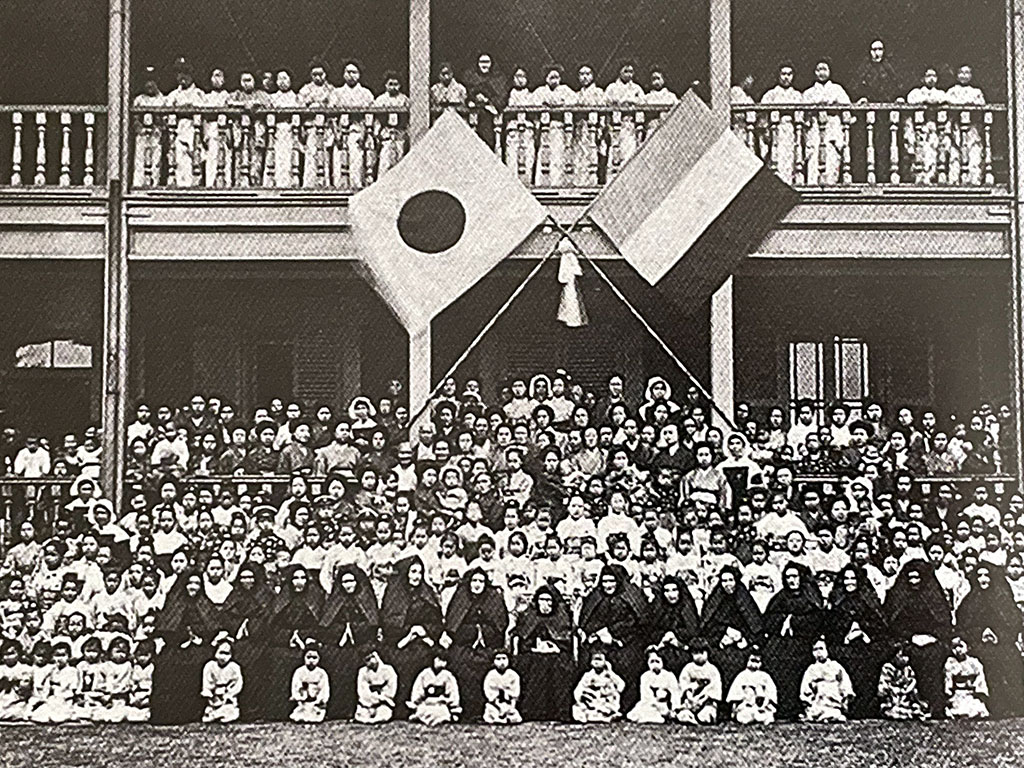
Celebrating the 50th Anniversary of Mathilde_s Vows
October 20, 1902 marked the 50th anniversary of Mathilde’s arrival in Asia. The community, composed of sisters, children, past and present, and missionary priests, wanted to express their good wishes and contribute to this special day. The most precious gift that Mathilde received was a copy of the minutes of a council meeting held in the Mother House, giving permission for the opening of a house in Shizuoka. At age 90, Mathilde’s heart and mind showed no flagging; however, her body was finding it hard to keep up. She had been asking her superiors to relieve her of her responsibilities, and finally on April 1, 1907, another Infant Jesus sister was named to replace her. Mathilde stayed on, in the background, never interfering in any way, asking for nothing, and never complaining. She hardly left her room, except to go to the chapel, but never bored herself, spending her days knitting and reading books with a magnifying glass, and chatting with the sisters who dropped by to keep her company.
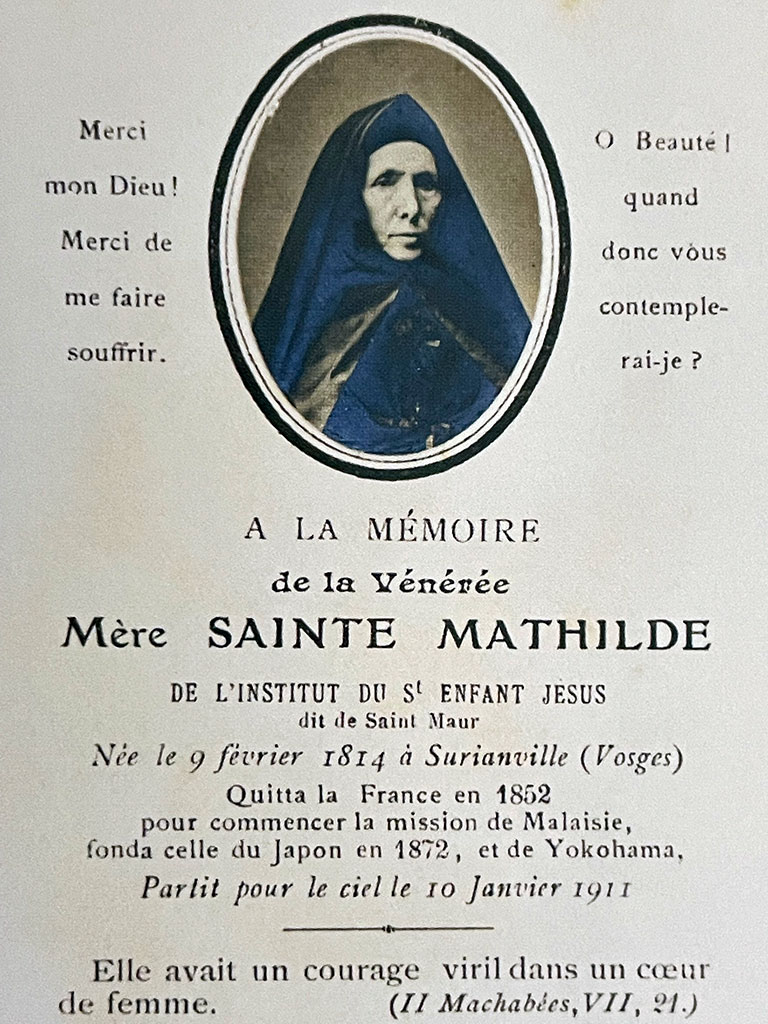
Mathilde's Funeral in 1911
The community celebrated her 100th birthday in advance, on July 7, 1910. This was the last time that Mathilde saw gathered together children, boarders, students both Japanese and European. Since then July 7 every year, the feast of the 205 Japanese martyrs and Mother Mathilde’s feast day have been celebrated together. Mathilde died peacefully, on July 20, 1911 at 1:30 a.m., murmuring the name of Jesus.
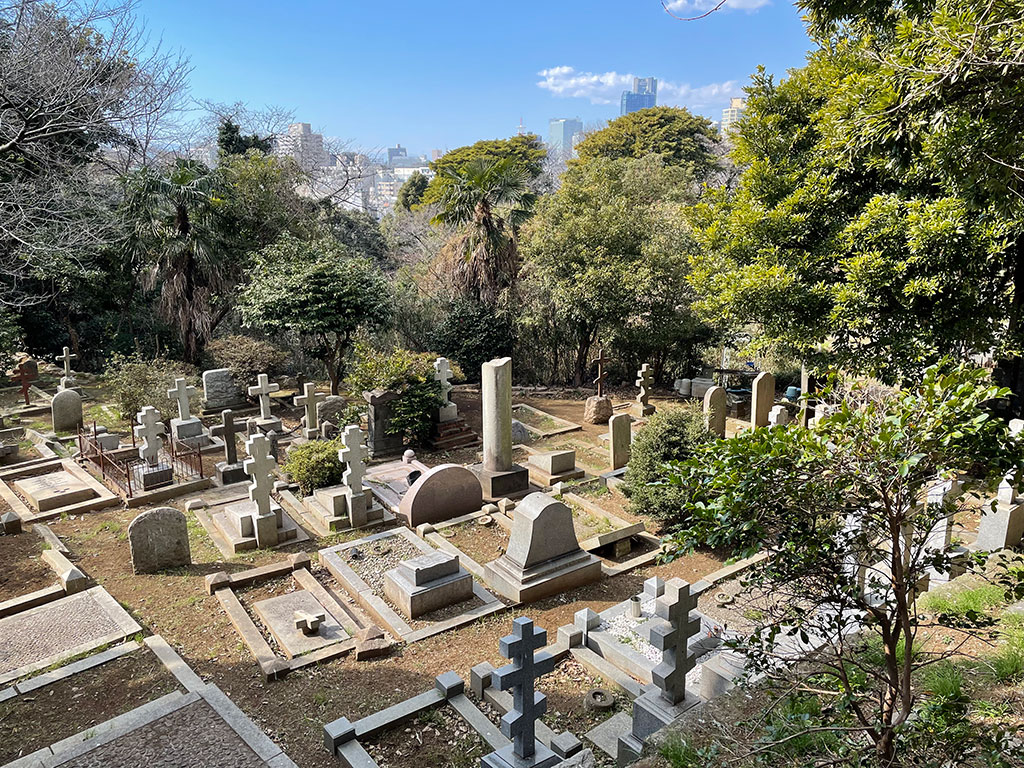
Yokohama Foreign Cemetery
When Mother Mathilde died, among the three thousand Japanese children that she had reared and brought to Christianity, about fifteen attached themselves to the Congregation as associates. When asked what they had to say about this Mother whom they had just lost, they opened their hearts and said: “She loved the Japanese people dearly, as her very own children. She cared for both soul and body. She provided medicines for destitute sick people, and when they died, she paid for their funeral and burial. When it was a question of assuring the eternal salvation of a soul she would refuse nothing. When she spoke of us, she didn’t refer to us as the “orphans”, but always said “our children”. For us, it is not too much to say that she was a second Francis Xavier.”
Mathilde was a totally giving person, who was not afraid of contacting illnesses herself. A good example is the way she approached the lepers who were abandoned without shelter or help of any kind. It was forbidden to carry these afflicted individuals to where other people lived. She did her best to provide them with tea and hot food, and a little bit of physical comfort, such as nice, clean fresh straw to lie down on. Knowing that she could not heal them physically, she gave them this message: “Courage! With a little repentance and a little love, you will soon be with our Savior in a place of delight where all your tears will be wiped away. Peace and trust to all people of good will.” For them her words were “good news” of radiant hope for their soul and life beyond their physical lifetime.
Mathilde was unwavering in her trust in Divine Assistance, and “miracles” happened around her, such as getting a well that was blocked by an earthquake to be dug out and successfully having water seep out at the bottom of the well. Another example is that of necessary funds appearing out of nowhere to cover needed costs for survival. A sister who was the bursar who counted the bank notes in the cashbox and was sorry to have to break the news to Mother Mathilde that they didn’t have enough money to pay for rice to feed everybody, was convinced that when Mathilde insisted on counting the bank notes herself, they multiplied in her hands. She came up with just the sum that was needed. It had also been rumoured in Singapore that one day, when there wasn’t enough food, Mother Mathilde found rice where others were sure the provisions had been totally used up.
Having read about the life of Mathilde Raclot, as a person and as the servant of God, I could not help but liken her to Jesus Christ, who gave himself completely to others, to those who were marginalized in society—the lepers, the tax collector, the prostitute, the poor and hungry. He worked miracles to heal both body and soul, and followed the will of God the Father.
Mathilde was a living example of what she believed in. She was a woman of prayer and action. Through her life, she exemplified the motto of the Infant Jesus Congregation: “Simple in Virtue, Steadfast in Duty”.
Catherine Osias Endo Chairperson of the Board of Directors


